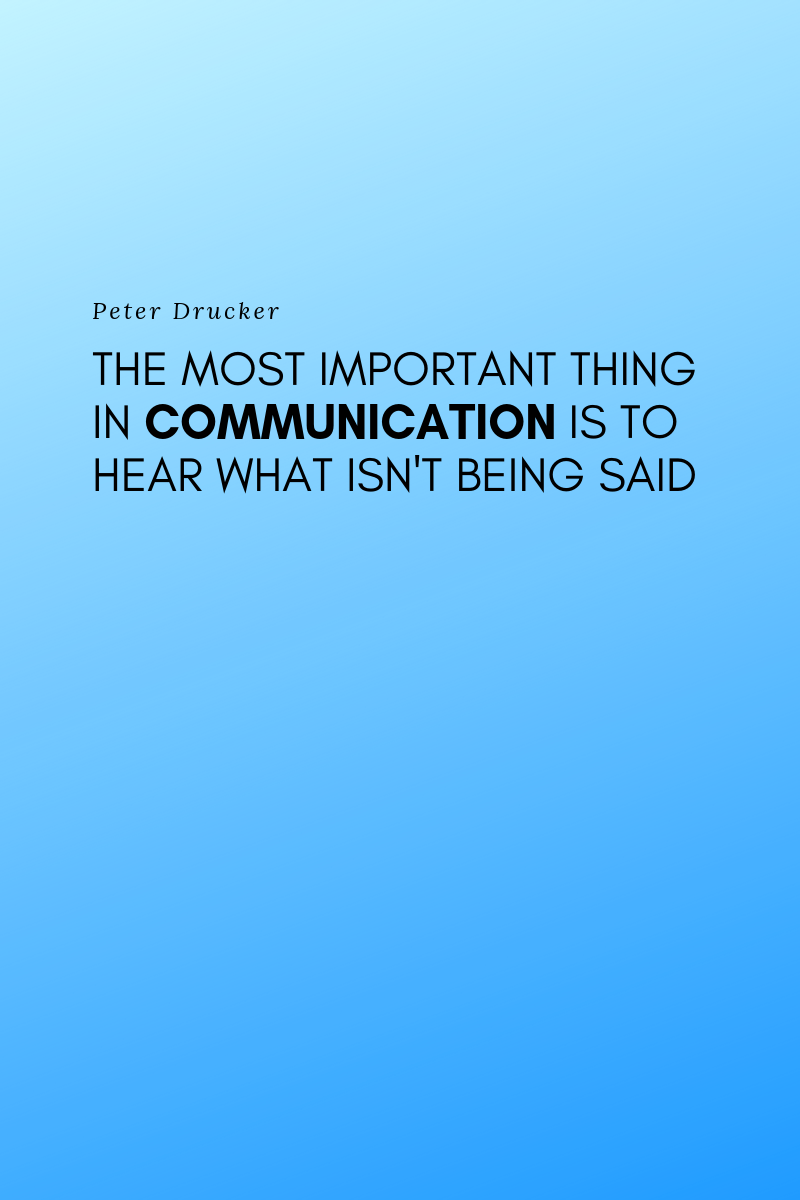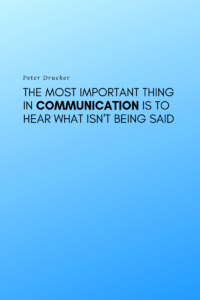
Effective communication for supervisors include avoiding these 5 mistakes and taking responsibility for the communication in the workplace.
5. Picking email over the phone or face-to-face conversations.
It seems so easy to just shoot an email to an employee or coworker instead of calling them or walking over to their office. But written communication often creates problems.
Written communication misses all that we communicate non-verbally — through gestures, body language, eye movements, etc. Non-verbal communication is about 90% of what we communicate. Therefore, in-person communication is critical to fully communicate our message. Telephone communication is the next best because you are able to hear the vocal inflections. And your last choice should be some form of written communication, including emails.

Technology has improved and we all want an instant answer to our question. But sometimes the fastest answer is found by turning away from the computer screen. Plus, as technology has increased throughout our lives, we humans are in a position to crave connection. Pick up the phone or walk down the hallway. Connect with your coworkers. Make effective communication happen.
4. Giving vague feedback or no feedback
I think everyone would agree with the following 2 statements.
Employees want to get the recognition and appreciation for doing a job well. And, most of the time, they want to know if there is something that they need to work on to improve. Obviously, supervisors need to provide feedback to their employees on both what they are doing well and on what needs improvement.
But what actually happens in the workplace may, or may not, be of value. Believe it or not, when a supervisor says, “Good job” it is often meaningless to the employee. What did it refer to? Why was it a good job? How did it differ from what they did last time?
Good feedback needs 3 things:
- Be specific
- Give it as soon as possible
- Make sure it is relevant
Make it a point to give relevant feedback to your employees on a regular basis. Look for ways to incorporate it into your regular routine. For example, set up a calendar reminder each week to remind yourself to give feedback. It sounds silly but it does work. Good feedback helps make effective communication occur in the workplace.
3. Reacting Emotionally to Events
It is no surprise to anyone that being around someone who seems to exist on an emotional roller-coaster is draining. I am sure you have heard stories about workers stopping by the secretary’s desk to find out if today is a good day or bad day with the big boss. His or her daily “temperature” drives the day-to-day atmosphere in the work group.
On the other hand, you’ve probably had a boss or supervisor who has been a “Steady Eddy” and kept their cool during stressful moments. That’s who you want to model yourself after. You need to manage your emotions at work. We all know that sometimes moodiness or anger erupts at the office. Most workplaces have some high-stress situations, deadlines, etc. that are difficult to navigate without any emotion. However, these should be the exception, not the norm.
You need to make sure you are doing the right things to keep your emotions in check to manage the stress at the office. Consider the following list:
- Eat healthy foods
- Exercise
- Get enough sleep
- Spend some time with family or friends who energize you
- Take time off; find ways to relax
- Develop a spiritual discipline of devotions or meditations
By managing your emotions, you’ll create a more stable environment. That helps effective communication by establishing trust. Trust allows employees to talk to you without fear of how you’ll respond.
2. Talking, Talking, Talking
Yes, you are the boss. Yes, you have important information to share. Yes, it is important that your employees listen to what you say. BUT, it is also important that you listen to your employees. Effective communication requires both talking and listening.
Listening is one of the hardest parts of effective communication. We are so excited about what we are saying, or we know that our information is important, or we are just so busy, it is hard to stop and listen.
LISTENING (not waiting) IS THE HARDEST PART
What typically happens in a conversation is that you aren’t even listening to what the other person is saying. I remember taking a class on communication in college and was amazed to discover how much faster you can listen than someone else can talk. While there are some variables, the typical person utters about 125-175 words per minute. But we can listen to up to 450 words per minute. That’s a BIG difference.
So what do you think your brain is doing during that time? You think you are listening to the other person but your brain has already heard a word and is waiting and waiting and waiting for the next one. So, it takes a detour. It starts thinking about responding to the statement or question. It starts thinking about a big project coming up. Or maybe even about a vacation that you’ve planned.

You need to stop the monkey in your mind and focus on listening. Use active listening skills. We’ll cover those in detail at a later date but for right now, try this step. Repeat back what you think you heard. Try something like this, “I heard you say that you want more direction on the project and that you want the deadlines clarified. Is that right?” This gives the employee or coworker a chance to agree, disagree or clarify their message.
1. Communicating with everyone in the same way
One of the biggest hurdles to effective communication is when you try to communicate with everyone in the same way. It is critical to understand the different personality styles or communication styles within your work space.
You’ve probably noticed that some of your coworkers or employees want “just the facts.” Other people want to have a personal connection before jumping into the information. Some people are detail-oriented and some are big picture visionaries.
We all tend to communicate in the way that we prefer instead of considering the needs and desires of our team-mates, coworkers and employees. It is important to know how they communicate best and how to use effective communication with them.
